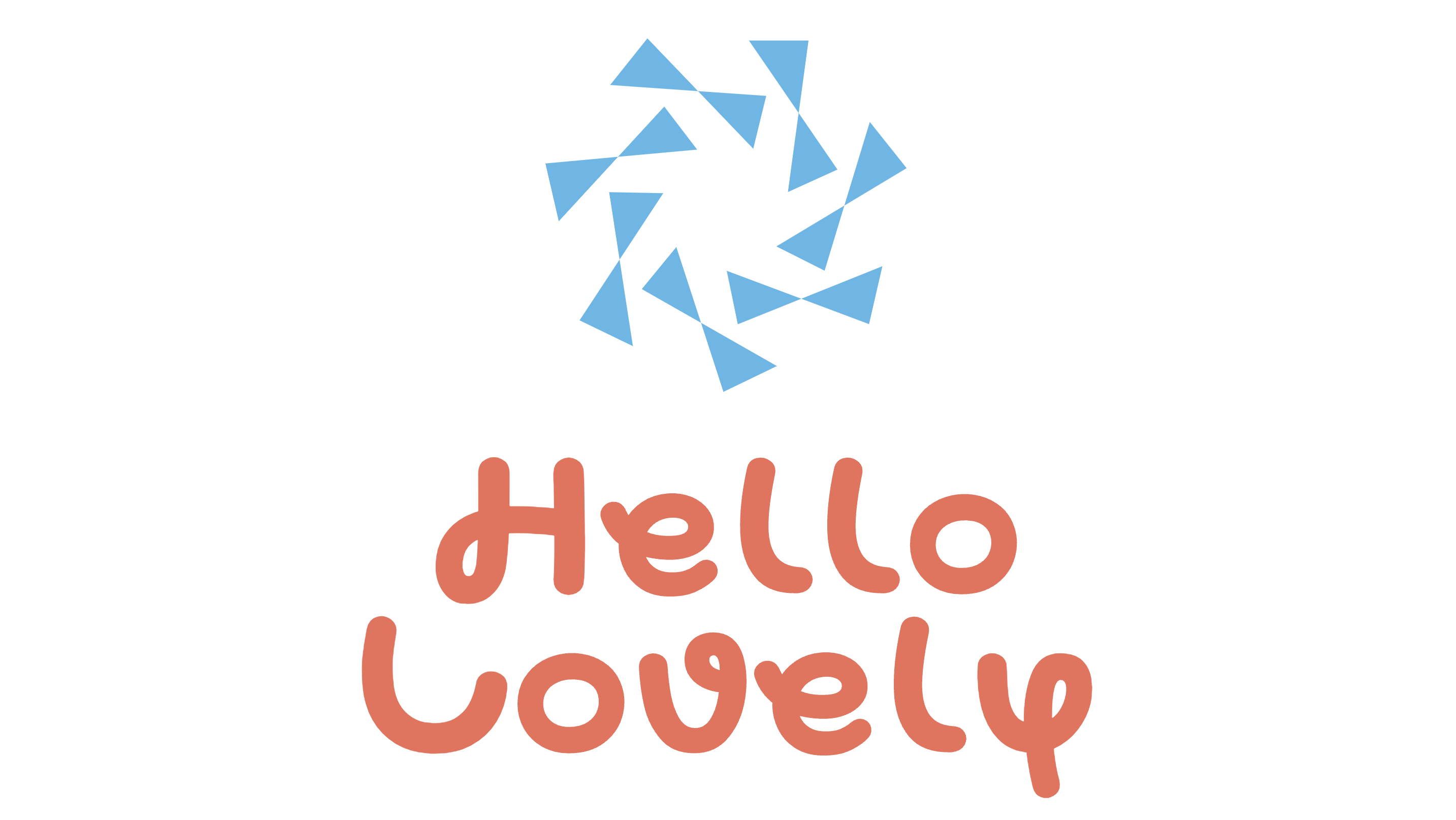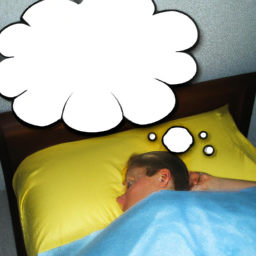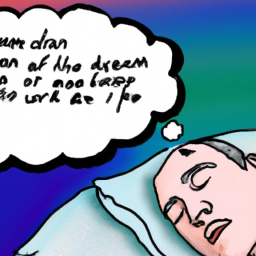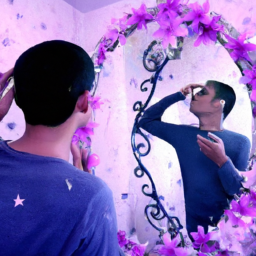Lucid Dreaming Techniques
What Does It Mean If I Have Vivid Dreams

Have you ever awakened from a dream that was so lifelike and clear, it compelled you to ponder its significance?
As I lay in bed, my mind still swirling with the images and emotions from my dream, I couldn’t help but wonder what it all meant. Vivid dreams, like technicolor movies playing in the depths of our minds, hold a mysterious allure. They captivate us with their vibrant details and intense emotions, leaving us with a lingering sense of curiosity.
In this article, we will delve into the world of vivid dreams, exploring their definition, common characteristics, and the various types that exist. We will also touch upon the intriguing phenomenon of lucid dreaming and the darker side of vivid dreams – nightmares.
So, if you’re ready to unravel the mysteries of your mind and embrace the magic of vivid dreams, join me on this insightful journey.
Key Takeaways
- Vivid dreams provide a window into our inner world and reflect our desires, fears, and conflicts.
- Analyzing symbols and events in these dreams can offer insights into thoughts, emotions, and experiences.
- Vivid dreams can enhance creativity and problem-solving skills but can also lead to unsettled feelings or confusion.
- Sleep disorders, medications, and substances can impact the content and intensity of vivid dreams.
The Definition of Vivid Dreams
If you’re having vivid dreams, it means your subconscious is painting vibrant pictures in your mind while you sleep. Vivid dreams are characterized by their intense clarity and lifelike quality. In these dreams, the details are vividly portrayed, making them feel real and tangible.
These dreams often incorporate elements of our waking life, but they go beyond mere replication. They are filled with symbolic interpretations and hold psychological significance. Vivid dreams provide a window into our inner world, reflecting our deepest desires, fears, and unresolved conflicts. They offer a unique opportunity for self-reflection and exploration of our subconscious mind.
By analyzing the symbols and events in these dreams, we can gain valuable insights into our thoughts, emotions, and experiences. Understanding the psychological significance of vivid dreams requires delving into our own personal experiences and beliefs. It involves identifying recurring themes, deciphering the hidden messages, and connecting them to our waking life experiences.
This process can be both enlightening and transformative, as it allows us to gain a deeper understanding of ourselves and our subconscious motivations. Moving on to the next section about the common characteristics of vivid dreams, it is important to note that these dreams often share certain traits and patterns.
Common Characteristics of Vivid Dreams
Explore the rich tapestry of your subconscious as vibrant imagery and intense emotions intertwine in your nightly journeys. Vivid dreams, characterized by their vividness and lifelike qualities, can provide both pros and cons to those who experience them.
Scientific research has shed light on the intriguing nature of these dreams and their impact on our waking lives. One of the benefits of vivid dreams lies in their ability to enhance creativity and problem-solving skills. As our minds delve into a world where anything is possible, we can explore new ideas and perspectives that may not have been accessible to us in our waking state. This imaginative playground can spark inspiration and lead to innovative thinking.
On the other hand, vivid dreams can also have downsides. Intense emotions experienced during these dreams can sometimes spill over into our waking lives, leaving us feeling unsettled or exhausted. Additionally, the realistic nature of these dreams can blur the line between dream and reality, leading to confusion or distress upon waking.
Despite the pros and cons, scientific research continues to unravel the mysteries of vivid dreams. By studying brain activity and dream content, researchers hope to gain a deeper understanding of why some individuals have more vivid dreams than others and how these dreams impact our overall well-being.
As we delve further into the realm of vivid dreams, let’s explore the different types of dreams that can grace our sleeping minds.
Types of Vivid Dreams
Immerse yourself in a world of endless possibilities as various types of vivid dreams unfold within your slumbering mind. Vivid dreams can take on several forms, each offering a unique and captivating experience.
Here are three types of vivid dreams that may leave you in awe:
-
Lucid dreaming: With the use of lucid dreaming techniques, you can gain control and awareness within your dreams. This type of dream allows you to actively participate and shape the dream’s narrative, creating a truly immersive experience. It can be a powerful tool for self-exploration and personal growth.
-
Epic adventures: In these dreams, you may find yourself embarking on thrilling journeys through fantastical landscapes. From soaring through the skies to delving into mysterious realms, these dreams offer a sense of excitement and wonder that can stay with you long after you wake up.
-
Vivid memories: Sometimes, vivid dreams can feel like reliving a cherished memory. Whether it’s a childhood vacation or a significant moment in your life, these dreams have the ability to transport you back in time and evoke intense emotions.
By enhancing dream recall and exploring lucid dreaming techniques, you can unlock the full potential of your vivid dreams. Now, let’s dive into the world of lucid dreams and discover the incredible experiences they hold.
Lucid Dreams
Prepare to be amazed as you enter the mind-bending realm of lucid dreams, where you can take control and shape the fantastical narratives that unfold within your slumbering mind.
Lucid dreams are a unique state of consciousness where the dreamer becomes aware that they are dreaming and can actively participate in the dream. It’s like being the director of your own movie, where you have the power to manipulate the dream environment, interact with dream characters, and even defy the laws of physics.
To achieve lucidity, various techniques can be employed, such as reality testing, where you question your surroundings to determine if you’re dreaming, or keeping a dream journal to enhance dream recall. Once lucidity is achieved, the dreamer can engage in a multitude of experiences that can be both thrilling and enlightening.
The benefits of lucid dreaming extend beyond mere entertainment. They provide a platform for personal growth and self-exploration. Through lucid dreams, you can confront fears, practice skills, and even tap into your creative potential. Additionally, lucid dreaming can be used as a tool for problem-solving and gaining insights into the subconscious mind.
As we delve further into the realm of dreams, we encounter a darker side – nightmares.
Nightmares
Nightmares, those terrifying nocturnal visions that haunt our sleep, can leave us feeling paralyzed with fear and drenched in sweat. Understanding the causes behind nightmares is essential in finding effective coping strategies.
There are various factors that can trigger nightmares, such as psychological stress, trauma, anxiety disorders, and even certain medications. These distressing dreams often reflect our deepest fears, anxieties, and unresolved emotions. They can be a manifestation of subconscious conflicts or a way for our minds to process traumatic experiences.
When faced with nightmares, it’s important to develop healthy coping mechanisms to alleviate their impact on our overall well-being. One effective strategy is practicing relaxation techniques before bed, such as deep breathing or meditation, to promote a calm and peaceful state of mind. Another approach is to maintain a consistent sleep schedule, ensuring that you get enough restful sleep each night. Additionally, engaging in regular exercise and avoiding stimulants like caffeine and alcohol can contribute to a more restful sleep and reduce the likelihood of nightmares.
Transitioning into the subsequent section about prophetic dreams, it’s important to note that not all vivid dreams are nightmares. Some dreams can be incredibly insightful and offer glimpses into our future. These prophetic dreams, though rare, have fascinated and intrigued individuals throughout history.
Prophetic Dreams
Explore the fascinating realm of prophetic dreams, where your slumber becomes a portal to glimpses of the future, leaving you awestruck and curious. Prophetic dreams are a type of vivid dream that are believed to provide insights or foretell future events. These dreams can feel incredibly real and often leave a lasting impression on the dreamer.
Some people even claim to have had supernatural experiences, where their dreams accurately predicted specific details that later came true in their waking lives. The concept of prophetic dreams has been present in various cultures and throughout history. It is a phenomenon that has captivated the human imagination for centuries.
While there’s no scientific evidence to support the existence of prophetic dreams, many individuals continue to report these experiences. Prophetic dreams can be a source of intrigue and wonder, as they offer a glimpse into the mysterious nature of the subconscious mind. They can spark curiosity about the nature of time, the power of intuition, and the potential interconnectedness of all things.
Understanding the possible meanings behind these vivid dreams can shed light on the inner workings of our minds and provide valuable insights into our waking lives. Moving on to the next section about the potential meanings of vivid dreams, we can delve further into the fascinating world of dream interpretation and explore the various ways in which our dreams can offer guidance and understanding.
The Potential Meanings of Vivid Dreams
Immerse yourself in the captivating world of vivid dreams, where hidden symbols and powerful emotions intertwine, offering profound insights into your subconscious mind and the complexities of your waking life. Vivid dreams are a fascinating phenomenon that can provide us with valuable information about ourselves and our experiences. When we have vivid dreams, it means that our dreams are exceptionally clear, vivid, and lifelike. These dreams often leave a lasting impression on us, evoking strong emotions and making it difficult to distinguish them from reality.
To better understand the potential meanings of vivid dreams, dream analysis approaches can be employed. One common approach is to analyze the symbolism within the dream. Symbols are representations of deeper meanings and can reveal important messages from our subconscious. By deciphering the symbols in our dreams, we can gain insights into our fears, desires, and unresolved conflicts.
Another approach to interpreting vivid dreams is to look at the overall narrative and themes present. Dreams often tell stories, and by examining the plot, characters, and events, we can uncover underlying messages and themes that relate to our waking life. For example, recurring dreams may indicate unresolved issues or patterns that need attention.
Incorporating a table to visually represent these approaches can provide a helpful framework for dream analysis:
Dream Analysis Approaches Description Symbolism Analyzing symbols within the dream to uncover deeper meanings. Narrative and Themes Examining the overall story, characters, and events of the dream. Recurring Dreams Paying attention to dreams that repeat, as they may indicate unresolved issues or patterns.
Understanding the potential meanings of vivid dreams requires delving into their symbolism and interpretation. By exploring the hidden messages and emotions within our dreams, we can gain valuable insights into ourselves and our waking lives. Transitioning into the subsequent section about ‘symbolism and interpretation,’ we continue to unravel the intricate layers of meaning embedded within our dreams.
Symbolism and Interpretation
Uncover the underlying secrets and symbols of your dream world as you delve into the depths of symbolism and interpretation.
Vivid dreams can often be filled with symbolism that holds psychological significance. The images, objects, and actions that occur in your dreams can represent hidden emotions, desires, or fears that may be difficult to access in your waking life. By understanding the symbolic interpretation of your dreams, you can gain insight into your subconscious mind and the inner workings of your psyche.
Symbolism in dreams can vary greatly from person to person, as it’s deeply personal and influenced by individual experiences and beliefs. For example, seeing a snake in a dream may represent transformation, healing, or fear, depending on the context and personal associations. Similarly, flying in a dream can symbolize freedom, liberation, or a desire to escape from a challenging situation.
Interpreting your dreams can be a fascinating and enlightening process. It allows you to tap into the wisdom of your unconscious mind and explore unresolved emotions and trauma. By paying attention to the symbols and themes that appear in your dreams, you can gain valuable insights into your inner world and work towards resolving any emotional issues that may be holding you back.
Transitioning into the subsequent section about ‘unresolved emotions and trauma’, it’s important to explore how these themes can manifest in your dreams and impact your overall well-being.
Unresolved Emotions and Trauma
Unresolved emotions and trauma can deeply affect your dream world, creating a labyrinth of tangled feelings and haunting images that linger in the shadows of your subconscious mind. When we experience trauma, whether it’s from a single event or ongoing emotional distress, our minds may struggle to process the overwhelming emotions associated with it. This can result in vivid and intense dreams that reflect our unresolved feelings and traumatic experiences.
Here are five ways in which unresolved emotions and trauma can manifest in dreams:
-
Nightmares: Vivid dreams filled with fear, anxiety, and distressing imagery may be a reflection of unresolved trauma and the emotional impact it has on us.
-
Recurring themes: Dreams that consistently revolve around a certain event or emotion can indicate that our mind is trying to process and heal from a traumatic experience.
-
Symbolism: Dreams often utilize symbols and metaphors to represent our emotions and experiences. Unresolved trauma can manifest in these symbols, providing insights into our emotional state.
-
Emotional release: Dreams can act as a form of emotional release, allowing us to process and express difficult emotions that may be too overwhelming in our waking life.
-
Fragmented narratives: Dreams affected by unresolved trauma may lack a clear storyline and instead consist of disjointed and chaotic scenes, mirroring the fragmented nature of our emotions.
Unresolved emotions and trauma can have a profound impact on our dream world, offering valuable insights into our emotional state and the healing process. As we continue to explore the connection between our dreams and emotional processing, we can gain a deeper understanding of ourselves and work towards trauma healing.
Transitioning into the next section, dreams also play a role in fostering creativity and problem-solving abilities.
Creativity and Problem-Solving
Tap into the power of your dreams, and watch as your creativity blossoms and your problem-solving abilities soar to new heights. Vivid dreams can be a portal to a world of endless possibilities, where our imagination can run wild and our subconscious mind can offer us valuable insights.
When we dream, our brain is free to explore and experiment without the constraints of reality, allowing us to tap into our innate creativity.
During vivid dreams, we are often presented with unique scenarios and situations that require us to think outside the box. This exploration of different scenarios and perspectives in our dreams can inspire us to approach problems in new and innovative ways when we are awake. Our dreams can serve as a playground for problem-solving techniques, allowing us to practice and refine our skills in a safe and controlled environment.
By paying attention to the details and themes in our vivid dreams, we can gain a deeper understanding of our subconscious thoughts and emotions. This self-reflection can help us identify any underlying issues or obstacles that may be hindering our problem-solving abilities in our waking life. By addressing these unresolved emotions, we can clear the path for more effective problem-solving strategies.
As we delve deeper into the link between vivid dreams and sleep patterns, we will uncover the fascinating ways in which our dreams are intertwined with our nightly rest.
The Link Between Vivid Dreams and Sleep Patterns
As I delved into the connection between creativity and problem-solving in relation to vivid dreams, I couldn’t help but wonder how these dreams are affected by our sleep patterns. It turns out that the link between vivid dreams and sleep patterns lies in the REM sleep stages and brain activity.
During REM sleep, our brain activity increases, and this is when we experience the most vivid and memorable dreams. This stage typically occurs later in the sleep cycle, and as we progress through the night, the duration of REM sleep becomes longer. This means that if we have a longer sleep duration, we’re more likely to have vivid dreams.
To paint a clearer picture, let me break it down into a 4-item numeric list:
- During REM sleep, our brain is highly active, resembling the wakeful state.nn2. The majority of our dreams occur during REM sleep.nn3. The longer we sleep, the more time we spend in REM sleep.nn4. Increased brain activity during REM sleep contributes to the intensity and vividness of our dreams.
Understanding the connection between vivid dreams and sleep patterns sets the stage for exploring the fascinating world of REM sleep and dreaming.
REM Sleep and Dreaming
Let’s dive into the fascinating world of REM sleep and how it contributes to our enjoyment of dreaming! During REM sleep, our brain activity is at its highest, and this is when most dreaming occurs. It is characterized by rapid eye movements, increased heart rate, and vivid dreams.
There are different types of dreams that can occur during REM sleep, including lucid dreams, nightmares, and recurring dreams. These dreams can be influenced by various factors such as our experiences, emotions, and subconscious thoughts.
Dream symbolism is another intriguing aspect of REM sleep. Many people believe that dreams have hidden meanings and can provide insight into our subconscious mind. Symbols and metaphors in dreams can represent different aspects of our lives, including our fears, desires, and unresolved conflicts. Analyzing dream symbolism can be a valuable tool for self-reflection and personal growth.
Understanding the connection between REM sleep and dreaming can help us appreciate the significance of vivid dreams. They allow us to explore our inner world, process emotions, and gain insight into ourselves. As we delve further into the topic of sleep disorders and vivid dreams, we will explore how disruptions in REM sleep can impact the quality and content of our dreams.
Sleep Disorders and Vivid Dreams
Insomnia, sleep apnea, and narcolepsy – these sleep disorders can all lead to intense and unforgettable dreams that leave us questioning reality. When our sleep is disrupted or our sleep cycles are irregular, it can have a profound impact on our dream patterns. One common phenomenon that may occur in individuals with sleep disorders is lucid dreaming, where one is aware that they are dreaming and can actively participate in the dream. This heightened level of consciousness during a dream can make the experience feel incredibly vivid and real.
Additionally, individuals with sleep disorders may also experience increased dream recall. Dream recall refers to the ability to remember and recall the details of one’s dreams upon waking up. While everyone dreams during REM sleep, not everyone remembers their dreams. However, those with sleep disorders may find that they have a greater ability to recall their dreams, which can contribute to the intensity and vividness of the dream experience.
Sleep disorders can have a significant impact on the nature of our dreams. They can lead to lucid dreaming and increased dream recall, resulting in dreams that feel incredibly vivid and memorable. These experiences can be both fascinating and disorienting, blurring the boundaries between our waking and dream states. Transitioning into the subsequent section, the role of the subconscious mind in vivid dreams becomes apparent.
The Role of Subconscious Mind in Vivid Dreams
As we explored in the previous section, sleep disorders can have a significant impact on the vividness of our dreams. However, there is another factor at play when it comes to the intensity of our dream experiences – the role of our subconscious mind.
Our dreams often serve as a symbolic representation of our thoughts, emotions, and experiences, providing a window into our innermost desires and fears. The subconscious mind acts as a reservoir of our deepest thoughts and feelings, which may not always be accessible to our conscious mind.
When we dream, our subconscious mind takes center stage, allowing us to process and make sense of these hidden aspects of ourselves. Vivid dreams can therefore be seen as a form of psychological healing, as they provide a safe space for us to explore and confront unresolved emotions or traumas.
By analyzing the content and symbolism of our dreams, we can gain valuable insights into our own psyche. Understanding the meaning behind our dreams can help us uncover patterns, gain self-awareness, and even guide us towards personal growth and development. It is through this introspective journey that we can begin to unravel the mysteries of our subconscious mind.
With this understanding of the profound role our subconscious plays in our dream experiences, we can now delve into the fascinating realm of Freudian interpretation.
Freudian Interpretation
Freudian interpretation delves into the deep dark depths of our dreams, deciphering hidden desires and buried fears. Sigmund Freud, the father of psychoanalysis, believed that dreams serve as a gateway to our subconscious mind. According to Freud, dreams are symbolic representations of our repressed wishes and unconscious thoughts. He proposed that the content of our dreams is a result of a complex interplay between our conscious and subconscious mind.
In the realm of Freudian interpretation, dreams are seen as a way for the unconscious mind to express itself. The symbols and imagery that appear in our dreams are not to be taken literally, but rather as representations of deeper meanings. For example, Freud believed that certain objects or actions in dreams could signify sexual desires or unresolved childhood conflicts. By analyzing these symbols, Freud aimed to uncover the hidden meanings behind our dreams.
To further understand Freud’s approach to dream interpretation, let’s take a look at a table that showcases some common symbols and their potential meanings:
| Symbol | Potential Meaning |
|---|---|
| Teeth | Anxiety or insecurity |
| Water | Emotions or the unconscious |
| Flying | A desire for freedom or power |
| Snakes | Sexuality or transformation |
| Falling | Fear of failure or loss of control |
Through this symbolic interpretation, Freud believed that dreams provided a window into our deepest desires, fears, and conflicts.
Transitioning to the subsequent section about Jungian archetypes, it is important to note that while Freud focused on the individual’s subconscious exploration, Carl Jung expanded this perspective to include a collective unconscious and the concept of archetypes.
Jungian Archetypes
Explore the fascinating world of Jungian archetypes, where you’ll uncover the hidden patterns and universal symbols that reside in your subconscious mind. According to Carl Jung, a Swiss psychiatrist and psychoanalyst, archetypes are innate, universal, and symbolic images that shape our dreams and play a significant role in our psychological development.
These archetypes are a reflection of our collective unconscious, a shared reservoir of experiences and knowledge that we inherit from our ancestors.
In the realm of dreams, the exploration of Jungian archetypes allows us to delve into the depths of our subconscious and gain valuable insights into ourselves. By recognizing and deciphering these archetypal symbols, we can better understand our fears, desires, and aspirations. For example, the archetype of the shadow represents the hidden and repressed aspects of ourselves, while the anima/animus archetype represents the feminine and masculine qualities within us.
By engaging in subconscious exploration through the lens of Jungian archetypes, we can begin to unravel the profound meanings behind our vivid dreams. Understanding the archetypal patterns that emerge in our dreams can lead to personal growth, self-discovery, and a deeper connection with our own psyche.
As we continue our exploration into the ways to enhance and control vivid dreams, we’ll build upon this foundation of understanding the archetypal language of the subconscious mind.
Ways to Enhance and Control Vivid Dreams
To enhance and control your vivid dreams, you can try practicing lucid dreaming techniques. These include reality checks and keeping a dream journal, which will help you become more aware and in control of your dream experiences. Lucid dreaming is a state where you are aware that you are dreaming while still in the dream, allowing you to actively participate and manipulate the dream. Here are a few ways to enhance and control your vivid dreams:
-
Reality checks: Throughout the day, ask yourself if you’re dreaming and perform simple reality checks like looking at your hands or trying to push your finger through your palm. This habit will carry over into your dreams, increasing the likelihood of becoming lucid.
-
Dream journal: Keep a journal next to your bed and write down your dreams as soon as you wake up. This helps in remembering your dreams and identifying recurring patterns or themes.
-
Meditation: Practice meditation before bed to calm your mind and increase your focus. This can enhance your ability to become aware within your dreams.
-
Visualization: Before sleep, visualize yourself becoming lucid in your dreams. Imagine recognizing dream signs and taking control of the dream narrative.
-
Enhancing creativity: Lucid dreaming is a powerful tool for enhancing creativity. Use your lucid dreams to explore new ideas, solve problems, and tap into your creative potential.
By practicing these techniques, you can enhance your creativity and gain control over your dreams, even turning nightmares into empowering experiences.
Now, let’s delve into the benefits of dream journaling.
Dream Journaling
One effective way to enhance your dream experiences is by keeping a dream journal, which allows you to remember and analyze the patterns and themes in your dreams. Dream journaling is a practice of recording your dreams as soon as you wake up, capturing as many details as possible. By keeping a dream journal, you can gain insight into your subconscious mind and explore the hidden meanings behind your dreams.
To make the most out of your dream journaling experience, it is helpful to create a structured format for your entries. Below is a table that can be used as a guide:
Date Dream Description Interpretation 01/01/2022 I was flying over a beautiful meadow. Symbolizes a sense of freedom and liberation. 01/02/2022 I was being chased by a mysterious figure. Represents a fear or unresolved issue in my life. 01/03/2022 I was attending a party with old friends. Signifies a longing for connection and nostalgia.
By analyzing the patterns and themes in your dreams, you can start to identify recurring symbols and themes. This can lead to a deeper understanding of your subconscious thoughts and emotions. Dream interpretation is a fascinating process that can provide valuable insights into your inner self.
As you delve into the world of dream interpretation, it is important to also incorporate reality checks to distinguish between dreams and reality.
Reality Checks
Using reality checks is like wearing a pair of glasses that helps me see the difference between the dream world and reality, preventing any confusion or disorientation.
Reality checks are techniques used to determine whether I’m dreaming or awake. By performing these checks throughout the day, I train my mind to do the same while I’m dreaming. This practice is crucial for those interested in lucid dreaming and dream interpretation.
There are various reality checks that can be done to enhance awareness during dreams. One common technique is trying to push a finger through the palm of my hand. In a dream, this would be effortless, while in reality, it would be impossible. Another technique involves looking at a clock or text, looking away, and then looking back to see if the numbers or words change. In dreams, these details often change or become distorted.
By incorporating reality checks into my daily routine, I can increase my chances of experiencing lucid dreams and gaining insights into my subconscious mind. These checks act as a reminder to question the nature of my reality, leading to a greater sense of self-awareness.
Transitioning into the next section about meditation and visualization, I can further explore the realm of dream exploration and self-discovery.
Meditation and Visualization
Immerse yourself in the calming practice of meditation and visualization, allowing your mind to delve into the depths of your inner world and unlock the hidden treasures of your subconscious. Through various meditation techniques, such as focused breathing or guided imagery, you can enhance your ability to have vivid dreams.
-
Focused breathing: By focusing on your breath, you can calm your mind and create a relaxed state conducive to vivid dreaming.
-
Guided imagery: Through visualization exercises, you can create detailed mental images that can later manifest in your dreams, making them more vivid and memorable.
-
Mindfulness meditation: By cultivating present moment awareness, you can enhance your overall dream recall and increase the clarity of your dreams.
Practicing meditation and visualization not only enhances your dream experiences, but it also offers numerous additional benefits. It can reduce stress and anxiety, improve sleep quality, and increase self-awareness. By incorporating these techniques into your daily routine, you can tap into your subconscious mind and explore the rich world of your dreams.
Transitioning into the subsequent section about the impact of lifestyle factors on vivid dreams, it’s important to consider how our daily habits and choices can influence the vividness and content of our dreams.
The Impact of Lifestyle Factors on Vivid Dreams
Explore how your lifestyle choices and habits can impact the vividness and content of your dreams, uncovering the fascinating connection between sleep patterns, diet, and emotional well-being. Dream interpretation has long been a subject of fascination and intrigue, with people seeking meaning and understanding in the images and narratives that unfold during sleep. However, what many may not realize is that the quality of our dreams can be influenced by various lifestyle factors.
One important factor that affects dream vividness is sleep hygiene. This refers to the habits and practices we adopt to promote good sleep. A consistent sleep schedule, a comfortable sleep environment, and avoiding stimulating activities before bed can all contribute to more vivid dreams. When we prioritize sleep and create a conducive atmosphere for rest, our dreams can become more intense and memorable.
Additionally, diet and nutrition play a role in dream vividness. Certain foods and beverages, such as caffeine and alcohol, can disrupt sleep patterns and lead to less vivid dreams. On the other hand, a balanced diet rich in vitamins, minerals, and antioxidants can promote better sleep quality, leading to more vibrant and meaningful dream experiences.
As we delve into the impact of lifestyle factors on dream vividness, it becomes clear that our choices and habits can significantly influence the content and intensity of our dreams. By paying attention to sleep hygiene and maintaining a healthy diet, we can enhance our dream experiences and gain valuable insights into our emotional well-being.
Transitioning into the next section about ‘diet and nutrition,’ we can see that what we consume has a profound impact on our dreaming world.
Diet and Nutrition
Our food choices and nutritional intake can have a profound impact on the vibrancy and significance of our dreams. The connection between diet and sleep is complex, and certain foods can influence the intensity and vividness of our dreams.
Nutritional deficiencies, for example, can affect the quality of our sleep and subsequently impact our dream experiences. Research suggests that deficiencies in vitamins B6, B12, and D, as well as minerals like iron and zinc, may contribute to more frequent and intense dreams.
Additionally, consuming certain substances before bed, such as caffeine and alcohol, can disrupt the sleep cycle and lead to more vivid dreams.
Understanding the relationship between diet and dream intensity can provide valuable insights into our overall well-being. By maintaining a balanced diet and ensuring adequate intake of essential nutrients, we can potentially enhance the vividness and significance of our dreams. However, it’s important to note that individual experiences may vary, and factors such as genetics and personal constitution can also influence dream intensity.
As we transition to the next section on ‘stress and anxiety,’ it’s important to acknowledge that our mental and emotional state can also impact our dream experiences.
Stress and Anxiety
Stress and anxiety can warp the tranquility of our dreams, leaving us tangled in restless thoughts and restless sleep. When we’re under excessive stress or anxiety, our minds are constantly racing, making it difficult for us to relax and fall into a deep sleep. This can result in vivid dreams that are often unsettling and disturbing.
Unhealthy coping mechanisms, like excessive alcohol consumption or drug use, can also contribute to vivid dreams. These substances can disrupt the normal sleep cycle and interfere with the brain’s ability to process information during sleep. As a result, our dreams may become more intense and vivid.
The impact of stress, anxiety, and unhealthy coping mechanisms on our mental health can’t be underestimated. Chronic stress and anxiety can lead to various mental health issues, including depression, anxiety disorders, and insomnia. The vivid dreams we experience may be a reflection of the underlying emotional turmoil we’re experiencing.
Transitioning into the subsequent section about medications and substances, it’s important to explore how certain medications and substances can also affect the content and intensity of our dreams.
Medications and Substances
Transition: Now that we have discussed the impact of stress and anxiety on vivid dreams, let’s explore another factor that can contribute to their intensity: medications and substances.
In some cases, certain medications can affect the content and frequency of our dreams. For example, antidepressants and other psychiatric medications are known to influence dream patterns. Additionally, substances such as alcohol, nicotine, and caffeine can interfere with the quality of our sleep, leading to more vivid dreams.
To further illustrate the connection between medications, substances, and vivid dreams, consider the following table:
Medications/Substances Influence on Dream Intensity Antidepressants May increase vividness Alcohol Can enhance dream content Nicotine May lead to intense dreams Caffeine Can disrupt sleep, resulting in vivid dreams
It is important to note that not everyone will experience the same effects, as individual reactions to medications and substances can vary. Nonetheless, it is worth considering the impact of these factors on your dream experiences.
Understanding the potential influence of medications and substances on vivid dreams can provide valuable insight into the origins of your dreams. However, if these dreams become overwhelming or disruptive, it may be time to seek professional help.
Seeking Professional Help for Vivid Dreams
If you’re struggling with intense dreams, it may be beneficial to seek professional help. Professional guidance can provide valuable insights into the meaning and significance of your vivid dreams. A skilled therapist or counselor can help you navigate the complex world of dream interpretation, offering a deeper understanding of your subconscious mind and the messages it may be trying to convey.
Here are four reasons why seeking professional help for vivid dreams can be beneficial:
-
Expertise: Professionals have specialized knowledge and training in dream analysis, allowing them to provide accurate and insightful interpretations.
-
Objectivity: By discussing your dreams with a neutral party, you can gain a fresh perspective and explore different angles of interpretation.
-
Emotional Support: Vivid dreams can be emotionally challenging, and a therapist can provide a safe space for you to express and process your feelings.
-
Coping Strategies: Professionals can teach you coping mechanisms to manage any distress or anxiety caused by vivid dreams, empowering you to regain control over your sleep patterns and overall well-being.
By seeking professional help, you can gain a deeper understanding of your vivid dreams and learn how to navigate their impact on your daily life.
When to Consult a Doctor or Therapist
When you feel like your dreams are becoming overwhelming and interfering with your daily life, it may be time to consult a doctor or therapist. Vivid dreams can be a normal part of sleep, but if they start to affect your well-being, seeking professional help can be beneficial.
A doctor or therapist can help you explore the underlying causes of your vivid dreams and provide guidance on how to manage them effectively. Therapy can be a valuable tool in understanding and addressing the reasons behind your vivid dreams. It can provide a safe and supportive environment for you to explore your thoughts, emotions, and experiences that may be contributing to the intensity of your dreams. Through therapy, you can gain insight into any unresolved issues or traumas that may be manifesting in your dreams.
In addition to therapy, there are alternative treatments that can be explored to help manage vivid dreams. These may include relaxation techniques, such as meditation or deep breathing exercises, which can help calm the mind before sleep. Other approaches, such as keeping a dream journal or practicing lucid dreaming, can also be effective in gaining control over your dreams.
Transitioning into the subsequent section about therapy approaches for dream analysis, it is important to consider various techniques that can help unravel the meaning behind your vivid dreams.
Therapy Approaches for Dream Analysis
When considering therapy approaches for dream analysis, it’s important to recognize that dreams can hold deep symbolic meaning and provide insight into our subconscious minds. Therapists often use various techniques to explore and interpret the symbolism within our dreams, helping us gain a deeper understanding of ourselves and our emotions.
One popular approach is Jungian dream analysis, which focuses on the collective unconscious and archetypes that appear in our dreams. This method delves into the symbolic interpretation of dream images, recognizing their potential for personal growth and spiritual guidance. By exploring the recurring themes, characters, and symbols in our dreams, we can uncover hidden aspects of our psyche and gain valuable insights into our lives.
Another therapy approach for dream analysis is Gestalt therapy. This approach emphasizes the here and now, encouraging individuals to explore and express their dreams through dialogue and role-playing. Through the exploration of dreams, individuals can gain a deeper understanding of their emotions, conflicts, and desires, leading to personal growth and self-awareness.
Transitioning into the subsequent section about ’embracing the magic of vivid dreams,’ it’s essential to recognize the transformative power that lies within our dreams. Instead of dismissing them as mere fantasies, we can embrace the profound messages and lessons they offer.
Embracing the Magic of Vivid Dreams
Explore the enchanting world of vivid dreams and let their captivating essence guide you on a transformative journey of self-discovery and personal growth.
Embracing the wonder of vivid dreams opens up a realm of possibilities, where you can delve into the depths of your subconscious mind and uncover hidden meanings and messages.
Vivid dreams have a magical quality to them, as they transport us to alternate realities and offer a glimpse into the inner workings of our psyche. They can be filled with vibrant colors, vivid imagery, and intense emotions, leaving a lasting impression upon waking. By embracing the magic of these dreams, we can gain valuable insights into our fears, desires, and unresolved issues.
Exploring the possibilities within our vivid dreams allows us to tap into our creative potential and gain a deeper understanding of ourselves. We can use these dreams as a tool for self-reflection, analyzing the symbols and themes that arise and deciphering their significance in our waking lives. By embracing the wonder of vivid dreams, we open ourselves up to new perspectives and possibilities for personal growth.
So, next time you find yourself in the midst of a vivid dream, take a moment to appreciate its enchanting essence. Embrace the wonder and allow it to guide you on a transformative journey of self-discovery. You never know what insights and revelations await you in the realm of vivid dreams.
Frequently Asked Questions
Are vivid dreams a sign of a sleep disorder?
Having vivid dreams can be a sign of a sleep disorder, but it’s not always the case. Vivid dreams can be related to mental health issues, such as anxiety or depression. To manage and reduce the intensity of vivid dreams, techniques like practicing good sleep hygiene, managing stress levels, and engaging in relaxation exercises before bed can be helpful. Consulting a healthcare professional is also recommended for a proper diagnosis and guidance.
Can vivid dreams be a result of unresolved emotions or trauma?
Unresolved emotions and childhood trauma can indeed contribute to the vividness of one’s dreams. It’s ironic how our subconscious mind tries to process and make sense of these unresolved issues while we sleep.
Dreams can serve as a canvas for our emotions, allowing us to confront and explore our deepest fears and desires. The intensity of these dreams may be a reflection of the unresolved emotions and traumas that we carry, urging us to address and heal them in our waking lives.
What is the role of the subconscious mind in vivid dreams?
The subconscious mind plays a significant role in vivid dreams. During sleep, the subconscious mind processes and integrates information from our waking life, including unresolved emotions or trauma.
Vivid dreams can be a way for the subconscious to communicate and work through these unresolved issues. Additionally, lucid dreaming can allow for conscious control and exploration of the subconscious, leading to a deeper understanding of oneself.
Dream interpretation can further aid in subconscious healing by uncovering hidden meanings and facilitating emotional release.
How can dream journaling enhance and control vivid dreams?
Dream journaling can greatly enhance and control vivid dreams. By recording our dreams regularly, we can improve our dream recall and gain insights into our subconscious mind.
Interestingly, a study conducted by the University of California found that dream journaling can significantly enhance creativity.
Additionally, dream journaling can be a stepping stone to practicing lucid dreaming techniques. By becoming more aware of our dreams, we can actively participate in them, leading to more fulfilling and empowering dream experiences.
Do lifestyle factors such as diet, stress, and medications impact vivid dreams?
Lifestyle factors like diet, stress, and medications can indeed impact the intensity of our dreams. For instance, consuming heavy or spicy meals close to bedtime can increase the likelihood of vivid dreams.
Additionally, high levels of stress or anxiety can stimulate the mind during sleep, leading to more vivid dreams. Certain medications, such as antidepressants or sleep aids, may also influence dream intensity.
Furthermore, the impact of exercise and sleep position on dream vividness is an interesting area of study that warrants further investigation.
Conclusion
In conclusion, having vivid dreams can be a fascinating and insightful experience. It allows us to delve into the depths of our subconscious and explore our emotions, fears, and desires.
While some may find vivid dreams to be overwhelming or disturbing, it’s important to remember the adage, “The eyes are the windows to the soul.” Our dreams serve as a window into our innermost thoughts and can provide valuable insights into our psyche.
Embrace the magic of vivid dreams and use them as a tool for self-discovery and personal growth. Seek professional help if needed, but remember, your dreams are a unique and powerful part of who you are.
Eislyn is a gifted writer whose words weave enchanting narratives within the realm of dreams. With a profound love for storytelling and a deep curiosity about dreams, Eislyn’s articles transport readers into vivid dreamscapes.
Her writing style is both eloquent and thought-provoking, captivating readers’ imaginations and inspiring them to dive deeper into the mysteries of their own dreams. Eislyn’s exploration of dream symbolism and interpretation adds depth and nuance to our content, making it an absolute pleasure for dream enthusiasts to engage with.
Lucid Dreaming Techniques
Why Do I Have Lucid Dreams Every Night

Every night when I go to sleep, I find myself in a realm where anything can happen. My dreams are intense, detailed, and seem so lifelike. In these dreams, I’m more than just a spectator; I play an active role. I have the ability to dictate the direction of my dreams, alter the surroundings, and I can even soar through the skies.
I am experiencing what is known as lucid dreaming, and it happens to me every night. Lucid dreaming is like a portal to another dimension, a place where the impossible becomes possible, and the mind has no limits. It is a surreal experience that is both exhilarating and mysterious.
But why do I have lucid dreams every night, and what does it mean? In this article, we will explore the science behind dreaming, the factors that influence lucid dreaming, and the benefits and risks of this phenomenon. We will also discuss techniques for controlling lucid dreams, such as keeping a dream journal, seeking professional help, and maintaining good sleep hygiene.
So, get ready to dive deep into the world of lucid dreaming and unlock the secrets of your mind.
Key Takeaways
- Not everyone experiences lucid dreaming and it’s unclear why some people have it more frequently.
- Lucid dreaming can be induced through various techniques and intention and motivation can influence it.
- Good sleep hygiene, regular sleep, and avoiding caffeine/alcohol can increase the likelihood of lucid dreaming.
- Lucid dreaming has potential therapeutic applications for mental health disorders and can be used for self-improvement, problem-solving, creativity, and spiritual/mystical experiences.
What are Lucid Dreams?
Lucid dreams, or dreams in which you are aware that you are dreaming, can be a fascinating and surreal experience. In these dreams, you are able to control the narrative and environment, making it feel as real as waking life.
I’ve been having lucid dreams every night for some time now, and it’s become a normal part of my sleep cycle. During a lucid dream, you can explore your subconscious mind and face your fears head-on. It’s like being in a virtual reality game where you have complete control.
However, it’s important to note that not everyone experiences lucid dreams, and it’s still a mystery why some people have them more frequently than others. This is where the science behind dreaming comes into play.
The Science Behind Dreaming
You might be interested to know that scientists have been studying dreams and their function in the brain for decades. Through their research, they’ve discovered that dreaming is a complex process that involves multiple regions of the brain.
Here are three interesting facts about the science behind dreaming:
-
During REM sleep, the brain waves are similar to those of someone who’s awake and alert. This suggests that the brain is highly active during dreaming, even though the body is in a state of paralysis.
-
The amygdala, a part of the brain responsible for processing emotions, is particularly active during dreaming. This may explain why dreams can be so emotional and intense.
-
Dreams are thought to play a role in memory consolidation. Studies have shown that people who’re deprived of REM sleep (the stage of sleep where most dreaming occurs) have difficulty remembering information they learned the previous day.
Now, let’s delve into the factors that influence lucid dreaming.
Factors that Influence Lucid Dreaming
By understanding the various factors that can affect the likelihood of experiencing a lucid dream, I’ve been able to increase my chances of having one.
One of the most important factors is sleep hygiene, which includes getting enough sleep, having a regular sleep schedule, and avoiding caffeine and alcohol before bedtime.
Additionally, keeping a dream journal and practicing reality checks throughout the day can help to increase awareness and recognition of dream-like states, making it more likely to become lucid during a dream.
Another factor that can influence lucid dreaming is intention and motivation. By setting the intention to have a lucid dream before going to sleep and visualizing the experience, I’ve found that I’m more likely to have one.
Having a strong motivation for lucid dreaming, such as wanting to overcome a recurring nightmare or explore a specific scenario, can increase the likelihood of having a lucid dream.
With these factors in mind, I’ve been able to have more frequent and vivid lucid dreams, which has led to a better understanding of my subconscious mind and the potential benefits of lucid dreaming.
The Benefits of Lucid Dreaming
Immerse yourself in a world of limitless possibilities as you explore the potential benefits of lucid dreaming. One of the most significant benefits of lucid dreaming is the ability to control the dream and manipulate its elements. This means that you have the power to turn your nightmares into pleasant dreams and even create your own dream scenarios that are impossible to experience in real life.
Lucid dreaming can also help you enhance your creativity, problem-solving skills, and overall mental well-being as it allows you to tap into your subconscious mind and explore your innermost thoughts and emotions. Moreover, lucid dreaming can be a tool for personal growth and self-discovery as it enables you to confront your fears, overcome obstacles, and gain insights into your own psyche.
Some people even use lucid dreaming as a way to practice skills they want to develop in real life, such as public speaking or sports. However, before you dive headfirst into exploring the world of lucid dreaming, it’s important to be aware of the potential risks and take necessary precautions to avoid them.
The Risks of Lucid Dreaming
Exploring the world of lucid dreaming comes with potential risks, such as the possibility of experiencing sleep paralysis or confusing dreams with reality. While lucid dreaming can be an exciting and enjoyable experience, it’s important to be aware of the potential risks that come with it.
Here are some of the potential risks associated with lucid dreaming:
-
Sleep paralysis: This is a condition where a person is unable to move or speak while waking up or falling asleep. It can be a frightening experience and can sometimes occur during lucid dreaming.
-
False awakenings: This is a dream where a person believes they’ve woken up, only to realize that they’re still dreaming. It can be disorienting and confusing.
-
Loss of sleep quality: Constantly engaging in lucid dreaming can lead to a disrupted sleep cycle, which can affect the quality of sleep a person gets.
-
Confusing dreams with reality: If a person becomes too immersed in their lucid dreaming, it can be difficult to differentiate between what’s real and what’s not.
Despite these potential risks, there are techniques that can be used to control lucid dreams and minimize the risks.
Techniques for Controlling Lucid Dreams
You can take control of your dreams by using techniques such as visualization and reality checks. These practices can help you become aware that you are dreaming and allow you to manipulate the dream world.
Visualization involves imagining a specific scenario or object before going to sleep. This can increase the likelihood of it appearing in your dream. Reality checks involve questioning whether you are dreaming throughout the day. For example, looking at your hands or trying to push your finger through your palm.
If you make these habits a regular part of your routine, they may carry over into your dreams and help you realize that you are dreaming. Another technique for controlling lucid dreams is to keep a dream journal.
Writing down your dreams as soon as you wake up can help you remember them more vividly and identify recurring patterns or themes. This can also make it easier to recognize when you are dreaming and allow you to set specific goals for your dreams, such as flying or visiting a particular location.
By practicing these techniques and making them a part of your daily routine, you may be able to have more meaningful and enjoyable lucid dreams on a regular basis.
Keeping a Dream Journal
Keeping a dream journal can improve dream recall and help identify recurring patterns or themes. It’s a simple yet effective technique for lucid dreamers to gain insight into their dream world. By writing down every detail of your dreams as soon as you wake up, you’ll be able to remember them more vividly and accurately. This can help you recognize your personal dream signs and triggers that may help you become aware that you’re dreaming.
To make the most out of your dream journal, it’s important to be consistent and organized. Create a table with three columns labeled ‘Date’, ‘Dream’, and ‘Interpretation’. In the ‘Date’ column, write the date and time of when you woke up from the dream. In the ‘Dream’ column, write down everything you remember from the dream- people, places, events, and emotions. In the ‘Interpretation’ column, write down your thoughts and feelings about the dream and try to make sense of it. This table will help you see patterns and connections between your dreams, and may lead to a deeper understanding of your subconscious mind.
By keeping a dream journal, you’ll be able to explore your inner world and learn more about yourself. However, if you’re experiencing frequent and intense lucid dreams that are affecting your daily life, it may be time to seek professional help.
Seeking Professional Help
After keeping a dream journal for a while, I realized that my lucid dreams were becoming more frequent and intense. I couldn’t help but wonder if there was something deeper going on. That’s when I decided to seek professional help.
Talking to a therapist or sleep specialist can help uncover any underlying issues that may be contributing to my frequent lucid dreams. They can also provide guidance on how to manage and control my dreams, which can be helpful if they’re causing any disruptions in my daily life.
Here are some potential benefits of seeking professional help for lucid dreaming:
- Identifying any underlying psychological or medical conditions
- Learning techniques for dream control and management
- Reducing anxiety and stress related to the dreams
- Improving overall sleep quality
- Preventing any potential negative effects on mental health
As I continue to explore ways to manage my lucid dreams, it’s important to also consider maintaining good sleep hygiene.
Maintaining Good Sleep Hygiene
By practicing good sleep hygiene, your mind and body will be as refreshed as a blooming garden in the morning.
This means establishing a consistent sleep schedule, avoiding caffeine and alcohol before bedtime, and creating a comfortable sleep environment.
By going to bed and waking up at the same time every day, your body will get into a routine and know when it’s time to sleep and when it’s time to wake up. This can lead to more restful and rejuvenating sleep, which can help reduce the frequency of lucid dreams.
In addition to a consistent sleep schedule, it’s important to avoid stimulants like caffeine and alcohol before bedtime. Caffeine can keep you awake and alert, while alcohol can disrupt your REM sleep, which is when most dreams occur.
Creating a comfortable sleep environment can also help improve the quality of your sleep. This can mean investing in a comfortable mattress and pillows, keeping your bedroom cool and dark, and minimizing noise and distractions.
By practicing good sleep hygiene, you can improve the quality of your sleep and potentially reduce the frequency of lucid dreams.
Frequently Asked Questions
Can lucid dreaming be dangerous?
Yes, lucid dreaming can be dangerous if not practiced responsibly. It can cause sleep disruption, hallucinations, and even lead to sleep paralysis. It’s important to educate oneself and use caution when attempting to induce lucid dreams.
Is it possible to have lucid dreams without trying to control them?
Yes, it’s possible to have lucid dreams without trying to control them. I used to think that lucid dreaming meant complete control, but I’ve learned that it’s more about being aware and present in the dream.
Are there any foods or supplements that can enhance lucid dreaming?
Yes, there are foods and supplements that can enhance lucid dreaming such as vitamin B6, galantamine, and choline. However, it’s important to consult with a doctor before taking any supplements.
Can lucid dreaming be used for therapeutic purposes?
Lucid dreaming can be used for therapeutic purposes, such as overcoming phobias or trauma. It allows the dreamer to confront and process their emotions in a safe environment. However, it should be done under the guidance of a professional.
Can lucid dreaming affect the quality of regular sleep?
Yes, lucid dreaming can affect the quality of regular sleep. When I have lucid dreams every night, I often feel more tired and less rested in the morning. It’s important to find a balance between lucid dreaming and getting enough sleep.
Conclusion
So, why do I have lucid dreams every night? After researching and exploring this phenomenon, I’ve come to the conclusion that it’s a combination of factors.
My sleep patterns, mental state, and personal habits all play a role. While having control over my dreams can be exciting and empowering, it’s important to remember the potential risks and to use techniques to maintain a healthy balance.
On one hand, lucid dreaming offers me a chance to explore my subconscious mind, confront fears, and even practice skills. On the other hand, it can also lead to sleep disturbances, anxiety, and even dissociation from reality.
It’s up to me to use the tools and knowledge available to ensure that my lucid dreaming experiences are positive and beneficial. In the end, it’s a journey of self-discovery and self-care.
Josephine brings a wealth of knowledge in psychology to the Hello Lovely team. Her understanding of the human mind and its connection to dreams provides a fresh perspective to our content.
With a research-oriented approach, Josephine’s articles delve into the intricacies of dream psychology, exploring topics such as lucid dreaming, dream analysis, and the impact of dreams on our well-being. Her ability to bridge the gap between scientific research and accessible writing ensures that readers gain valuable insights into the psychological aspects of dreaming.
Lucid Dreaming Techniques
How To Have Wet Lucid Dreams

I’ve always found the notion of lucid dreaming captivating. The thought of being able to navigate and shape my dreams, experiencing wonders beyond what I can conceive, is genuinely fascinating.
And when I learned about the possibility of having wet lucid dreams, where I could experience both the pleasure of sexual arousal and the power of lucidity, I was even more intrigued.
In this article, I will share with you my journey and experiences in exploring wet lucid dreams. I will provide tips and techniques on how to prepare for and induce wet lucid dreams, as well as maintain lucidity and experience orgasm.
I will also discuss the challenges that may arise and how to overcome them, as well as the importance of processing the experience and continuing the journey towards more profound and meaningful lucid dreaming experiences.
So, let’s dive in and explore the exciting world of wet lucid dreams together!
Key Takeaways
- Wet lucid dreams require relaxation and openness, as well as the ability to manage physical responses.
- Stabilizing techniques such as reality checks, engaging senses, and managing emotions can help maintain control during the experience.
- Incorporating sexual experiences can enhance the practice, but it is important to process the experience for personal growth and self-awareness.
- Overcoming challenges such as nightmares and discomfort can be achieved through confronting fears, relaxation exercises, creating a comfortable sleep environment, and focusing on positive aspects of the dream.
Understanding Lucid Dreaming
Let’s delve into the mind-bending world of lucid dreaming and figure out how to take control of our dreams!
Lucid dreaming is the ability to become aware during a dream and then take control of the dream itself. It’s like being a director of your own movie, where you get to create the plot, the setting, and the characters.
Many people report that lucid dreams feel incredibly real, and that they can be used to explore their deepest fears, desires, and fantasies. Plus, lucid dreaming can be used to improve creativity, problem-solving skills, and even to practice real-life tasks.
So, how can we start lucid dreaming? Let’s find out how to explore the fascinating world of wet lucid dreams!
Exploring Wet Lucid Dreams
Interestingly, research shows that around 80% of people have experienced physical sensations in their dreams, including touch and taste. This means that it’s possible to have a wet dream while lucid dreaming.
A wet lucid dream is when you become aware that you’re dreaming and can control your dream while also experiencing sexual pleasure and potentially having an orgasm. In order to have a wet lucid dream, it’s important to prepare both mentally and physically.
This can include setting an intention before going to sleep, practicing relaxation techniques, and even incorporating physical stimulation during the dream. By preparing beforehand and being aware of your dream state, you can potentially experience a wet lucid dream and explore this unique and exciting aspect of dreaming.
Preparing for Wet Lucid Dreams
To prepare for experiencing sexual pleasure and potentially having an orgasm in your dreams, you should focus on setting an intention before going to sleep and practicing relaxation techniques.
Firstly, set a clear and specific intention for what you want to experience in your wet lucid dream, whether it’s exploring your sexuality, having a particular sexual encounter, or simply enjoying the sensation of being wet. This will help your subconscious mind to focus on creating the experience you desire.
Secondly, practice relaxation techniques such as deep breathing, progressive muscle relaxation, or visualization to calm your mind and body before falling asleep. This will help you to enter a state of deep relaxation, which is conducive to having lucid dreams and experiencing sexual pleasure in your dreams.
Remember that wet lucid dreams require a certain level of relaxation and openness, so it’s important to let go of any expectations or judgments and simply allow yourself to surrender to the experience.
Now that you know how to prepare for wet lucid dreams, let’s move on to the next section about inducing lucid dreams.
Inducing Lucid Dreams
Achieving lucidity in your dreams is a skill that can be developed with practice and patience. There are several techniques that can help induce lucid dreams, and finding the right one for you may take some trial and error. One popular method is the reality check technique, where you ask yourself throughout the day if you are dreaming, and perform a simple reality check like trying to push your finger through your hand. Eventually, this habit will carry over into your dreams and you will perform the reality check, realizing that you are dreaming.
Another technique is the wake-back-to-bed method, where you set an alarm for 4-6 hours after going to bed, wake up, and stay awake for 30-60 minutes before going back to sleep. During this time, you can do activities like reading about lucid dreaming to increase your chances of having a lucid dream. Additionally, practicing relaxation techniques like meditation and visualization can help you enter a lucid dream state. It’s important to remember that everyone’s experiences with lucid dreaming are unique, so don’t get discouraged if it takes some time to achieve your first wet lucid dream.
Transitioning into the next section, maintaining lucidity is just as important as inducing it.
Maintaining Lucidity
Maintaining lucidity in a dream can be a difficult task, but it’s crucial if you want to fully explore the dream world and make the most of your lucid experience.
One of the key ways to maintain lucidity is by stabilizing the dream, which involves grounding yourself in the dream environment and preventing it from fading away.
Additionally, enhancing control over the dream and managing your emotions can also help you maintain your lucidity and stay in control of your dream experience.
Stabilizing the Dream
When you’re in a wet lucid dream, it can be challenging to stabilize the dream for more extended periods. But did you know that a study found that practicing reality checks during the day can increase the length and stability of lucid dreams?
This technique involves questioning your reality throughout the day and testing whether you are awake or dreaming. Once you’re in a wet lucid dream, you can continue performing reality checks to maintain your awareness and control over the dream.
Aside from reality checks, there are other ways to stabilize your wet lucid dream. Firstly, try to focus your attention on the dream environment instead of getting too caught up in your thoughts or emotions. Secondly, engage with your senses by touching objects, smelling flowers, or tasting food in the dream. Lastly, spinning your body or rubbing your hands together can help ground you in the dream and prevent you from waking up.
With these techniques, you can improve your chances of experiencing a more stable and longer-lasting wet lucid dream, giving you more time to explore and experiment. Moving on to enhancing control of your wet lucid dream, there are other techniques that you can use to take your dream experience to the next level.
Enhancing Control
To truly command your dream world, it’s essential to master the art of controlling your surroundings. When you become lucid in a dream, it’s common to feel overwhelmed or excited and lose control.
To prevent this from happening, try to stay calm and focused. Take a moment to observe your surroundings and determine what you want to do next. Once you have a plan in mind, use your mental intention to bring it to life.
For example, if you want to fly, imagine yourself soaring through the air and feel the wind rushing past your face. With practice, you’ll be able to manipulate your dream environment to suit your desires.
However, it’s important to remember that controlling your dreams doesn’t mean controlling every aspect of your experience. Emotions can be unpredictable and can affect the content of your dreams.
Managing your emotions can help you stay in control of your dream and prevent unpleasant experiences. If you feel overwhelmed or frightened, try to remind yourself that you’re in a dream and that you have the power to change your situation.
Take deep breaths and focus on positive thoughts to help shift your emotions. By developing emotional self-awareness, you can create a more enjoyable and fulfilling lucid dreaming experience.
Managing Emotions
Emotional self-awareness is key to creating a positive and fulfilling lucid dreaming experience, as it allows you to manage your emotions and prevent unpleasant experiences. When you become lucid in your dreams, it’s easy to get carried away by strong emotions such as excitement or fear, which can quickly destabilize the dream and cause you to wake up. Therefore, it’s important to stay grounded and maintain a sense of calmness and control, especially when encountering challenging situations.
To better manage your emotions during lucid dreaming, it’s helpful to create a simple emotional management plan. Here’s a table that can serve as a starting point:
| Emotion | Strategy |
|---|---|
| Fear | Take deep breaths and remind yourself that it’s just a dream. |
| Anxiety | Focus on a relaxing image or mantra. |
| Excitement | Take a moment to stabilize the dream before engaging in any activities. |
By having a plan in place, you’ll be better equipped to handle any emotional challenges that arise during lucid dreaming. With practice, you’ll also become more adept at recognizing and regulating your emotions in the moment, which will lead to more enjoyable and rewarding lucid dreaming experiences. Now, let’s explore how incorporating sexual experiences can enhance your lucid dreaming practice.
Incorporating Sexual Experiences
When it comes to incorporating sexual experiences into my lucid dreams, I like to explore my fantasies in a safe and controlled environment. I communicate with dream characters to set boundaries and understand their desires. Experimenting with different techniques, such as changing the scenery or altering my own appearance, can also add an extra layer of excitement to my sexual lucid dreams.
Exploring Your Fantasies
Get creative and let your mind wander to fulfill all of your wildest dreams and desires, whether it’s exploring a mystical land or indulging in a steamy rendezvous with a celebrity crush. One way to explore your fantasies is to write them down in a dream journal. Write out a detailed description of what you want to experience in your lucid dream, including all of the sensory details like smells, sounds, and textures. As you fall asleep, focus on this written description and visualize yourself experiencing it. This technique can help make your fantasies more vivid and immersive.
Another way to explore your fantasies is to use a technique called “incubation.†Before going to bed, spend some time thinking about the fantasy you want to experience in your lucid dream. Imagine yourself in the situation and how it would feel to be there. Then, as you fall asleep, repeat a mantra or affirmation to yourself that reinforces the idea of experiencing your fantasy in your lucid dream. This can help program your mind to focus on your desired experience while you sleep. With these techniques, you can start to explore your deepest desires in your lucid dreams and have a truly unforgettable experience.
Now, let’s move on to the next section about communicating with dream characters.
Communicating with Dream Characters
Engage with the characters in your dreams like never before by learning how to effectively communicate with them. When you become lucid in a dream, take the time to ask questions and have conversations with the characters you encounter. Don’t be afraid to get creative with your questions and topics of discussion.
The more you engage with these characters, the more realistic and vivid your dreams will become.
Communicating with dream characters can also help you gain insight into your subconscious mind. The way they respond and interact with you can reveal hidden emotions and desires that you may not have been aware of in your waking life.
As you continue to practice lucid dreaming and communication with your dream characters, you may even start to recognize recurring characters or themes in your dreams. This can give you a deeper understanding of yourself and your inner thoughts and feelings.
Experimenting with different techniques can help you take your lucid dreaming and communication skills to the next level.
Experimenting with Different Techniques
By trying out various methods, you can elevate your skills in lucid dreaming and communication with dream characters, adding a new dimension to your dream world.
Experimenting with different techniques can help you achieve the wet dream of your dreams. Some people find that reality checks, such as counting fingers or looking at a clock, can help them become lucid in their dreams. Others use dream journals to increase their dream recall and gain more control over their dreams.
One technique that may help with having wet lucid dreams is visualization. Before going to bed, try imagining a scenario in which you’re experiencing the wet dream you desire. Focus on the sensations and emotions associated with the experience. This can help your mind become more attuned to the idea of having a wet dream and make it more likely to happen in your dream.
With these techniques, you may be able to achieve the wet dream of your desires without even trying.
Experiencing Orgasm
I’m excited to talk about experiencing orgasm during lucid dreaming. It’s a unique and thrilling sensation that takes some practice to achieve.
In this discussion, we’ll cover techniques for achieving orgasm, managing the physical response, and maintaining lucidity after orgasm.
Techniques for Achieving Orgasm
Let’s explore some techniques to achieve an orgasm during your wet lucid dream. One technique is to focus on the sensations in your dream body, paying attention to the pleasure that comes with each touch or movement. This can be done by exploring your dream environment, engaging in sexual activity with a dream character, or simply tuning in to the physical sensations of your dream body.
By focusing on these sensations and allowing yourself to fully immerse in the experience, you can increase the likelihood of experiencing orgasm.
Another technique is to use visualization and mental imagery to enhance the sexual experience in your dream. This can involve imagining erotic scenarios, visualizing a partner or partners, or even using fantasy to stimulate yourself.
By using mental imagery and visualization, you can create a more vivid and intense sexual experience in your dream, which can lead to a more powerful and satisfying orgasm. However, it’s important to remember to manage the physical response to these techniques in order to avoid waking up prematurely.
Managing the Physical Response
Achieving orgasm is a wonderful feeling that many people enjoy, but when it comes to having wet lucid dreams, it can be a bit of a challenge. However, there are techniques that can help you achieve this goal.
One of the most important things is to manage your physical response. When you start to feel the sensation of orgasm, you need to be able to control it and not let it completely take over.
To help you manage your physical response, here are three tips to keep in mind:
- Focus on your breathing – Take slow, deep breaths to help keep your body relaxed and avoid getting too excited too quickly.
- Change positions – If you feel like you’re getting too close to orgasm, try changing positions or slowing down to help prolong the experience.
- Use visualization techniques – Imagine yourself in a different setting or scenario to help distract your mind from the physical sensations and stay in control.
By following these tips, you can help increase your chances of having a wet lucid dream. However, once you’ve achieved orgasm, it’s important to maintain your lucidity. In the next section, we’ll explore some techniques for staying in control and keeping your dream going.
Maintaining Lucidity after Orgasm
To keep your dream going after experiencing orgasm, it’s important to maintain your lucidity by using specific techniques.
One technique is to focus on your surroundings and engage your senses. Take a moment to observe the details of your dream environment, such as the colors, textures, and sounds. Touch objects and surfaces to ground yourself in the dream world. Engaging your senses can help you stay present and prevent your mind from drifting away from the dream.
Another technique is to remind yourself of your intention to stay lucid. Repeat a mantra to yourself, such as "I’m dreaming, I’m in control,"to reinforce your awareness. It can also be helpful to visualize yourself staying in the dream, perhaps by imagining a rope or ladder that you can climb to stay in the dream world.
By using these techniques, you can maintain your lucidity and continue to explore your dream world even after experiencing orgasm.
Now, let’s move on to the next section and explore how to process the experience of a wet lucid dream.
Processing the Experience
After you’ve had a wet lucid dream, take some time to process the experience and reflect on any insights or emotions that arose during the dream. Here are some tips that’ve helped me:
-
Write down your dream as soon as you wake up. The details may fade quickly, so jotting down what happened can help you remember the experience more vividly.
-
Pay attention to any recurring themes or symbols in the dream. These may hold deeper meaning and can provide insight into your subconscious.
-
Consider the emotions you felt during the dream. Were you scared? Excited? Curious? Reflecting on these emotions can help you understand more about yourself and your desires.
-
Practice gratitude for the experience. Not everyone’s able to have lucid dreams, so take a moment to appreciate the special gift you’ve been given.
Reflecting on your wet lucid dream can be a powerful tool for personal growth and self-awareness. It’s not always easy to understand the messages our subconscious is trying to convey, but with practice and patience, we can begin to unlock the mysteries of our dreams.
As we explore the world of lucid dreaming, we may encounter challenges along the way. However, these obstacles can be overcome with persistence and dedication.
Overcoming Challenges
Dealing with nightmares, managing discomfort, and coping with disappointment are some of the challenges that we may encounter when attempting to have lucid dreams. Personally, I’ve experienced some scary and unpleasant dream scenarios, which can be quite distressing even when we know we’re dreaming.
Additionally, the physical sensations of being asleep and immobile for an extended period of time can be uncomfortable, especially if we’re not used to it.
Lastly, there may be instances where we fail to achieve our desired lucid dreaming goals, which can be disappointing and frustrating.
However, there are ways to overcome these challenges and continue to work towards our lucid dreaming aspirations.
Dealing with Nightmares
If you’re having nightmares while trying to have wet lucid dreams, don’t worry – there are ways to overcome them and still achieve your goal.
One technique is to confront the nightmare head-on. Instead of running away or trying to wake up, face the fear and try to change the outcome of the dream. This can be done by reminding yourself that you’re in control of the dream and can manipulate it to your advantage.
Another technique is to practice relaxation and visualization exercises before going to bed. This can help reduce anxiety and promote positive dream experiences.
In addition to these techniques, it’s important to create a comfortable sleep environment. Make sure your sleeping area is free of distractions and that you’re physically comfortable. You can also try incorporating calming scents or sounds into your bedtime routine.
By managing discomfort and creating a peaceful sleep environment, you can increase your chances of having wet lucid dreams without the interference of nightmares.
Managing Discomfort
I hope the tips on dealing with nightmares were helpful. Now, let’s talk about managing discomfort during wet lucid dreams. It’s important to remember that discomfort is a natural part of the experience, but there are ways to minimize it and still have a pleasurable experience.
One way to manage discomfort is to experiment with different sleep positions. Sleeping on your side or stomach may alleviate pressure on sensitive areas and reduce discomfort. Another way is to use lubrication, such as a water-based lubricant, to reduce friction and increase comfort. Additionally, practicing relaxation techniques before bed can help you remain calm and comfortable during the experience.
| Tip | Description | Example |
|---|---|---|
| Sleep position | Experiment with different positions to alleviate pressure on sensitive areas | Sleeping on your side or stomach |
| Lubrication | Use a water-based lubricant to reduce friction and increase comfort | KY Jelly |
| Relaxation techniques | Practice relaxation techniques before bed to remain calm and comfortable | Deep breathing exercises |
Now that we’ve covered managing discomfort, let’s move on to coping with disappointment in wet lucid dreams.
Coping with Disappointment
To cope with disappointment during your wet lucid dream experience, what can you do when things don’t go as planned?
First, try not to get too attached to a specific outcome. Instead, focus on the experience as a whole and be open to whatever happens. If you find yourself feeling disappointed, take a moment to acknowledge your emotions and then let them go. Remember that this is just one experience and there will be others.
Another way to cope with disappointment is to shift your focus to something positive. For example, if you were hoping to meet a certain person in your dream but it didn’t happen, focus on the other amazing things that did happen in the dream. Maybe you were able to fly or visit a beautiful location. By focusing on the positive aspects of the dream, you can still feel fulfilled and grateful for the experience.
As you continue the journey towards more wet lucid dreams, remember that each experience is unique and special in its own way.
Continuing the Journey
Keep practicing and experimenting with different techniques to maintain the level of lucidity in your wet dreams. It can be easy to get discouraged when you don’t have a successful lucid dream every night, but it’s important to remember that this is a journey and it takes time to master.
Here are some tips to help you continue on your path towards lucid dreaming success:
-
Keep a dream journal: Writing down your dreams every morning can help you remember them more vividly and increase your awareness of your dream state.
-
Reality checks: Make a habit of doing reality checks throughout the day to help you recognize when you’re dreaming.
-
Meditation: Practicing mindfulness meditation can improve your overall awareness and help you maintain focus during your lucid dream.
-
Experiment with different techniques: Don’t be afraid to try different methods to help you achieve lucidity. Some people find success with the Wake Back to Bed technique, while others prefer the MILD technique. Keep trying until you find what works best for you.
Remember, the key to having a wet lucid dream is to stay committed and keep practicing. With time and effort, you can achieve success and experience the exhilarating world of lucid dreaming.
Frequently Asked Questions
Can wet lucid dreams be harmful in any way?
I have researched and found no evidence to suggest that wet lucid dreams can be harmful in any way. In fact, they are a natural and healthy part of sexual expression and can provide a pleasurable experience.
Is it possible to have a wet lucid dream without any sexual experiences?
I was skeptical at first, but after research and experimentation, I found that wet lucid dreams can indeed be experienced without any sexual content. It’s all about controlling your thoughts and focusing on a different sensation.
How long does it take on average to induce a wet lucid dream?
On average, it takes me about a week of consistent reality checks and dream journaling to induce a wet lucid dream. It’s important to stay patient and keep practicing techniques to increase the likelihood of having one.
Are there any specific lucid dreaming techniques that are more effective for achieving wet lucid dreams?
Achieving wet lucid dreams requires a combination of techniques such as reality checks, dream journaling, and visualization. I swear by WILD technique, which may take longer, but the payoff is worth it!
Is it possible to have multiple wet lucid dreams in one night?
Yes, it is possible to have multiple wet lucid dreams in one night. However, this depends on various factors such as sleep quality, frequency of lucid dreams, and individual differences.
Conclusion
So there you have it, a guide on how to have wet lucid dreams. It’s important to remember that this is a personal journey and everyone’s experiences will vary. However, with practice and patience, anyone can master the art of lucid dreaming and even achieve a wet dream during the process.
One interesting statistic to note is that according to a study published in the Journal of Sex Research, approximately 83% of men and 37% of women have experienced a wet dream at some point in their lives. This emphasizes the idea that wet dreams are a natural and common occurrence, and should not be stigmatized or judged.
With a better understanding of lucid dreaming and the techniques discussed in this article, one can enhance their dream experiences and potentially even achieve a wet dream.
Happy dreaming!
Eislyn is a gifted writer whose words weave enchanting narratives within the realm of dreams. With a profound love for storytelling and a deep curiosity about dreams, Eislyn’s articles transport readers into vivid dreamscapes.
Her writing style is both eloquent and thought-provoking, captivating readers’ imaginations and inspiring them to dive deeper into the mysteries of their own dreams. Eislyn’s exploration of dream symbolism and interpretation adds depth and nuance to our content, making it an absolute pleasure for dream enthusiasts to engage with.
Lucid Dreaming Techniques
How To Have More Sexual Dreams

Ever woken up from a dream feeling turned on and found yourself wishing you could have more of those dreams? You’re not the only one. A lot of people experience sexual dreams and desire to have them more frequently.
The good news is that there are ways to increase the likelihood of having sexual dreams.
Firstly, it’s important to understand the science behind dreaming. Dreams occur during the REM (Rapid Eye Movement) stage of sleep and are believed to be linked with memory consolidation, problem-solving, and emotional regulation.
By creating the right sleep environment, keeping a dream journal, practicing lucid dreaming, incorporating erotic themes into your bedtime routine, exploring your sexual fantasies, using sleep aids and supplements or seeking professional help – all can help in increasing the chances of experiencing more sexual dreams.
So let’s dive deeper into these techniques and explore how we can enhance our dream life!
Key Takeaways
- Creating a comfortable and sensual sleep environment can promote sexual dreaming.
- Keeping a dream journal and practicing lucid dreaming techniques can help take control of dream outcomes.
- Experimenting with different approaches, such as incorporating erotic themes into bedtime routines or using sleep aids and natural remedies, can enhance sexual dream experiences.
- Seeking professional help to address psychological or emotional barriers to having sexual dreams can also be beneficial.
Understanding the Science of Dreaming
You’re probably wondering how you can have more sexual dreams, but first, let’s understand the science behind dreaming.
Dreams are an essential aspect of our lives and have been studied for centuries. Neurological processes play a significant role in the occurrence of dreams, especially during the Rapid Eye Movement (REM) phase of sleep.
During this phase, our brain is actively processing information from the day and consolidating it into memories. Dream interpretation techniques have also been developed to help us understand what our subconscious mind is trying to tell us through our dreams.
By understanding these scientific processes behind dreaming, we can begin to explore ways to enhance our dream experiences and potentially increase the occurrence of sexual dreams.
Now that we know about neurological processes and dream interpretation techniques involved in dreaming, let’s take a look at creating the right sleep environment. A comfortable sleep environment plays a crucial role in promoting deep and restful sleep.
Creating the Right Sleep Environment
When it comes to creating the right sleep environment for more sexual dreams, there are a few key things that I’ve found helpful.
Firstly, reducing distractions and disruptions is essential. This means minimizing noise, light, and other disturbances in the bedroom.
Additionally, incorporating sensual elements into your bedroom can help create a more conducive atmosphere for sexual dreaming. Soft lighting, comfortable bedding, and romantic décor can all contribute to a relaxing and sensual environment that encourages erotic dreams.
Reducing Distractions and Disruptions
By minimizing external stimuli like a soundproof room, you can sink into sleep as easily as a stone sinks into water.
Minimizing distractions and creating a soothing atmosphere in your bedroom is crucial to having sexual dreams. This means keeping electronics out of the room, avoiding loud noises, and making sure the temperature is comfortable.
Consider using blackout curtains or an eye mask to block out any outside light that might disturb your sleep. You could also try using earplugs or white noise machines to drown out any noises that might keep you awake. By doing so, you’ll create an environment that promotes deep relaxation and restful sleep.
Now that you’ve minimized disruptions in your bedroom, it’s time to focus on incorporating sensual elements into your sleeping space to further enhance your chances of having sexual dreams.
Incorporating Sensual Elements into Your Bedroom
To create a seductive atmosphere in your bedroom, add soft lighting and plush textures to your bedding. Introducing scented candles can also enhance the sensual experience. Choose scents that are known for their aphrodisiac properties, such as vanilla or jasmine. Place them strategically around the room, but be careful not to overwhelm the space with too many different scents.
Exploring different textures can also stimulate your senses and increase your chances of having sexual dreams. Invest in silky sheets, fluffy pillows, or even a faux fur throw blanket to create a variety of tactile sensations. You can also incorporate other sensory elements into your bedroom, such as playing soothing music or using essential oils in a diffuser.
By creating an environment that is both comfortable and arousing, you’re setting the stage for more vivid and erotic dreams. With these tips in mind, it’s time to start incorporating sensual elements into your bedroom for better dream experiences. But once you’ve created the perfect ambiance, how do you make sure those dreams stick? Keeping a dream journal can help you remember what happens during these nighttime adventures – read on to find out more!
Keeping a Dream Journal
If you want to have more sexual dreams, start keeping a dream journal and jot down all the vivid details as soon as you wake up. This will help you remember your dreams better and identify patterns in your subconscious desires.
Dream interpretation can be tricky, but keeping track of your dreams will give you insight into what your mind is trying to tell you.
Lucid dreaming techniques can also help increase the frequency of sexual dreams. By practicing lucid dreaming, you can become aware that you’re dreaming while still in the dream state and take control of the outcome.
You can create scenarios that involve sensual elements or even summon specific people or experiences from your waking life. With enough practice, lucid dreaming can become a powerful tool for exploring your sexuality in a safe and controlled environment without any inhibitions or consequences.
Practicing Lucid Dreaming
Keeping track of your dreams is a great way to start exploring the world of lucid dreaming. It allows you to recognize patterns in your subconscious and identify what triggers certain emotions or thoughts.
Once you have a good grasp on your dream journal, it’s time to take things up a notch by practicing lucid dreaming. Lucid dreaming is a state where you become aware that you are dreaming and can control the outcome of the dream. There are numerous benefits of lucid dreaming, such as improving problem-solving skills, reducing anxiety, and boosting creativity. However, achieving this state takes practice and patience.
Here are some tips for maintaining lucidity in dreams:
- Reality checks: Perform frequent reality checks during the day to train your brain to question whether you are awake or asleep.
- Dream cues: Look for specific signs within your dream that indicate that you are dreaming, such as distorted objects or flying.
- Stabilization techniques: Once you realize that you are in a dream state, focus on stabilizing the environment around you by touching objects or rubbing your hands together.
By incorporating these tips into your routine, you can increase your chances of having more sexual dreams and even experiencing them from a conscious perspective.
Speaking of which, let’s move onto the next section about incorporating erotic themes into our bedtime routine.
Incorporating Erotic Themes into Your Bedtime Routine
I’ve found that incorporating erotic themes into my bedtime routine has been a great way to enhance my dream life and overall well-being. Erotic visualization can have many benefits, such as reducing stress and anxiety, increasing intimacy in relationships, and promoting self-discovery.
There are several techniques I use to incorporate these themes, such as reading erotica before bed or practicing sensual meditation.
The Benefits of Erotic Visualization
To enhance your sexual dreams, try incorporating erotic visualization into your daily routine. Visualizing desires and sensual meditation techniques can help stimulate the mind and increase the likelihood of having more vivid and exciting sexual dreams.
Through visualization, you can tap into your subconscious desires and create a mental image of what turns you on. This technique involves focusing on specific images or scenarios that arouse you sexually while in a relaxed state. Sensual meditation techniques, such as deep breathing, muscle relaxation, and guided imagery, can also help prepare your mind for erotic visualization.
By incorporating these practices into your daily routine, you may find yourself experiencing more frequent and intense sexual dreams. As you explore the benefits of erotic visualization, there are various techniques for incorporating erotic themes that you can try. By experimenting with different approaches, such as reading erotica before bed or watching sexually stimulating movies, you can discover what works best for you in terms of enhancing your sexual dream experiences.
Techniques for Incorporating Erotic Themes
By experimenting with various forms of media that arouse you, such as erotic literature or provocative films, you can unlock new techniques for incorporating sensual imagery into your visualization practices.
When reading erotic literature, focus on the vivid descriptions and explore how they make you feel. Pay attention to the specific words and phrases that resonate with you and use them in your own visualizations.
Similarly, when watching provocative films, take note of the scenes or moments that arouse you and incorporate those images into your own fantasies.
Another technique for incorporating erotic themes into your visualizations is through mindful breathing techniques. By focusing on your breath and slowing it down, you can become more present in the moment and allow yourself to fully engage with your sexual fantasies.
Try taking deep breaths in through your nose and out through your mouth while imagining a sensual scenario. As you exhale, visualize yourself releasing any tension or stress from your body.
As we explore further into unlocking our subconscious desires by exploring our sexual fantasies…
Exploring Your Sexual Fantasies
Hey, you wanna have more sexual dreams? Well, why not let your imagination run wild and indulge in all those naughty fantasies you’ve been too afraid to admit?
Fantasy exploration is a powerful tool for increasing the likelihood of having erotic dreams. By exploring your sexual fantasies during waking hours, you’re effectively priming your mind to continue these thoughts during sleep.
To start exploring your sexual fantasies, try setting aside some time each day to fantasize. This could be while taking a shower, going for a walk, or even just before bed. Let yourself explore any desires or ideas that come up without judgment or shame.
The goal isn’t necessarily to act on these fantasies in real life, but rather to give your mind the freedom to explore and create new scenarios. With continued practice over time, you may find that these fantasies start seeping into your dream world as well.
Now that you’ve started exploring your innermost desires and laying the groundwork for more vivid dreams, it’s time to consider using sleep aids and supplements as another way of promoting erotic dreams.
Using Sleep Aids and Supplements
When it comes to enhancing my sleep and dreams, I’ve found that sleep aids and supplements can be incredibly helpful. From melatonin to valerian root, there are a variety of natural remedies that can help promote deeper, more restful sleep.
Additionally, some of these supplements have been shown to enhance dreams and increase dream recall, allowing me to explore my sexual fantasies even further.
The Role of Sleep Aids and Supplements
Boost your chances of having more sexual dreams by trying out sleep aids and supplements! While sleep aids and supplements can help promote better sleep, they may also influence the content of your dreams.
Here are some types of sleep aids and potential side effects of supplements that you might want to consider:
-
Types of Sleep Aids:
-
Melatonin: a hormone that regulates sleep-wake cycles
-
Valerian root: an herb used for anxiety and insomnia
-
Potential Side Effects of Supplements:
-
Stomach upset or nausea
-
Mood changes or irritability
It’s important to talk to your doctor before taking any new supplements, as they may interact with other medications or have adverse effects on your health. With the right guidance, however, incorporating these sleep aids and supplements into your routine could help you achieve more vivid and stimulating sexual dreams.
Now, if you’re looking for natural remedies for enhancing dreams without relying on medication, there are plenty of options available.
Natural Remedies for Enhancing Dreams
Sleep aids and supplements can be helpful in promoting deep and restful sleep, which is essential for having more vivid dreams. However, some people may prefer to use natural remedies instead of relying on medication.
Herbal remedies such as valerian root, chamomile tea, and passionflower can help reduce anxiety and promote relaxation before bed. These herbs have been used for centuries to aid with sleep and can also enhance the quality of your dreams.
Aromatherapy techniques are another natural way to improve dream recall and promote lucid dreaming. Essential oils like lavender, peppermint, and frankincense can be diffused or applied topically before bedtime to create a calming atmosphere that promotes deep relaxation. The scent of these oils can stimulate the limbic system in your brain, which is responsible for emotions and memories, leading to more vivid dreams.
If you feel like you’ve exhausted all natural options for enhancing your dreams but still feel unsatisfied with your dream life, seeking professional help may be the next step.
Seeking Professional Help
You absolutely need to consider seeking professional help if you want to have more sexual dreams. Professional guidance can help you work through any psychological or emotional barriers that may be blocking your ability to have sexual dreams.
A therapist can teach you therapy techniques, such as dream journaling and visualization exercises, that can increase your chances of having more vivid and sexually charged dreams.
Another benefit of seeking professional help is the opportunity to explore any underlying issues that may be impacting your sex life and overall well-being. This includes addressing past traumas, relationship problems, or self-esteem issues that may be affecting your ability to connect with your sexuality.
By working through these issues with a therapist, you can gain a better understanding of yourself and embrace your sensuality in a healthier way without feeling shame or guilt.
Embracing Your Sensuality
Embrace your sensuality by exploring new ways to connect with your desires and fantasies. Body positivity is a crucial aspect of this process. Learning to love and appreciate every inch of your body can help you feel more confident and comfortable in your skin, which can translate into a more fulfilling sex life.
Try practicing self-care rituals that involve touching and pampering yourself, like taking long baths or giving yourself a sensual massage. These activities can help you become more in tune with your body and its needs.
In addition to physical self-care, it’s essential to prioritize emotional self-care as well. This means being kind to yourself, practicing self-compassion, and allowing yourself to explore your desires without judgment or shame.
Sensual self-care could also include exploring erotic literature or pornography that aligns with your interests and fantasies. By embracing your sensuality in all its forms, you’ll be better equipped to have sexual dreams that reflect the depth of pleasure you’re capable of experiencing.
Frequently Asked Questions
Can sexual dreams affect your physical health?
Sexual dreams don’t typically affect physical health, but can enhance one’s sex life by exploring desires and creating arousal. The benefits of sexual fantasies include increased pleasure and intimacy with a partner.
Is it possible to control the content of your sexual dreams?
Yes, it’s possible to control the content of your sexual dreams through lucid dreaming techniques and dream journaling. With practice, you can become aware that you’re dreaming and guide the direction of your dreams, including sexual ones.
Can certain foods or drinks increase the likelihood of having sexual dreams?
Like a chef adding spices to a dish, arousal inducing foods and herbal supplements can add flavor to our sexual dreams. While scientific evidence is limited, some people report success with certain foods and supplements.
Is there a certain time of day that is better for inducing sexual dreams?
The best time for inducing sexual dreams is during the last few hours of sleep, when REM (rapid eye movement) cycles are longer. Nighttime routines and creating a comfortable sleep environment can also help promote vivid dreaming experiences.
Can practicing certain physical exercises or meditation techniques improve the quality of your sexual dreams?
With mindfulness practices and lucid dreaming techniques, I’ve improved my dream experiences. By focusing on breath and bodily sensations during the day, I’ve become more aware in my dreams, including sexual ones.
Conclusion
In conclusion, exploring the world of sexual dreams can be a fun and exciting journey. By understanding the science of dreaming, creating the right sleep environment, keeping a dream journal, practicing lucid dreaming, incorporating erotic themes into your bedtime routine, exploring your sexual fantasies, using sleep aids and supplements, seeking professional help, and embracing your sensuality, you can have more frequent and vivid sexual dreams.
As we delve deeper into our subconscious desires through our dreams, we may discover hidden aspects of ourselves that we never knew existed. Dreams are like keys to unlock the deepest corners of our minds. They provide us with an opportunity to explore our fantasies in a safe and private space.
So why not take advantage of this natural phenomenon? Allow yourself to embrace your sexuality and let your imagination run wild. Who knows what secrets you may uncover about yourself along the way!
Manda is the visionary Editor in Chief of Hello Lovely. With an unwavering passion for dreams, Manda ensures that our content is meticulously curated, informative, and engaging.
Their dedication to providing high-quality articles, guides, and resources is evident in the wealth of information available on our platform. Manda’s expertise in dream research, combined with their editorial prowess, helps shape Hello Lovely into a trusted source of dream-related knowledge. Their goal is to create a vibrant dream-centric community where individuals can explore, learn, and connect.
-

 Dream Meaning3 days ago
Dream Meaning3 days agoInspiring Stories Of Famous People Who Achieved Their Dreams
-

 Dream Meaning1 month ago
Dream Meaning1 month agoWhat Are Vivid Dreams
-
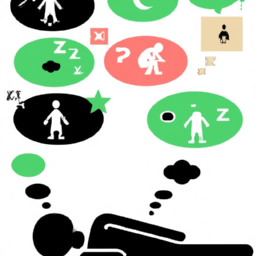
 Dream Meaning4 weeks ago
Dream Meaning4 weeks agoWhat Symbolizes Dreams
-

 Dream Meaning1 month ago
Dream Meaning1 month agoWhat Do Sexual Dreams Mean
-

 Lucid Dreaming Techniques1 month ago
Lucid Dreaming Techniques1 month agoHow Long Do Lucid Dreams Last
-

 Dream Meaning1 month ago
Dream Meaning1 month agoHow To Stop Wet Dreams As A Christian
-
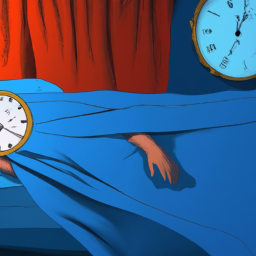
 Dream Meaning1 month ago
Dream Meaning1 month agoWhy Do Dreams Feel So Long
-

 Dream Meaning1 month ago
Dream Meaning1 month agoWhat Does It Mean When Your Dreams Come True




